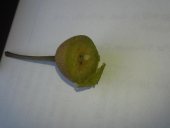
 1
1




 or maybe a common suggestion with a twist
or maybe a common suggestion with a twist 
Living in Anjou , France,
For the many not for the few
http://www.permies.com/t/80/31583/projects/Permie-Pennies-France#330873




David Livingston wrote:Hi Stephan
What plant /tree do you consider the most surprizing or rewarding in your orchard. One that did things compleatly unexpected . Or an unusual fruit .
Here in France I am trying medlar/nefle and Persimmon/kaki both rare north of the Loire .
Any unusual suggestions for meor maybe a common suggestion with a twist

David it's really hard to beat a tree ripened PLUM. My quote in the 9 minute video is very candid "The only thing wrong with this plum is you can never eat just one".
Last fall we counted one day we ate 25 plums off the tree per day for 3 weeks. Never felt so healthy in my life.
Oh I did get a taste of our new sweet cherries. Still regret I didn't plant 50 of them 5 years ago!!
 1
1





Living in Anjou , France,
For the many not for the few
http://www.permies.com/t/80/31583/projects/Permie-Pennies-France#330873




David Livingston wrote:I too enjoy plums . !I am lucky to have about twenty of these trees http://en.wikipedia.org/wiki/Mirabelle_plum . Well at least that is what I have been told they are. I look forward to finding out as we have only been in the property a couple of months These trees seem seem to have spread all over the property by themselves , a good sign I thought . I keep finding new ones

In Angers they are used in tarts, pies and jam.
What types do you grow ?
David




Living in Anjou , France,
For the many not for the few
http://www.permies.com/t/80/31583/projects/Permie-Pennies-France#330873
 1
1








http://notquitethereyethomestead.blogspot.com/ --On the highway going from here to there the question is oft asked "are we there yet". The oft given answer is "not quite yet". So it goes with life and with my little piece of it. This is my story. I get to tell it my way. I hope you enjoy it.
 3
3




I got excellent results grafting plums onto almond rootstock. These were raw store-bought almond seeds destined for eating. I just sprouted them instead. I grafted Japanese plums, not european. As a general rule though you get the highest success grafting like on like. That is peaches onto peach rootstock, and apples onto apple rootstock. Almond however seems to be ammenable to any other stone fruit, ie:peaches, apricots, plums, and necturines.Granny Brown wrote: I planted some seedling American plums this year. Would they work for root stock when I get some good scion wood ?
 1
1





Living in Anjou , France,
For the many not for the few
http://www.permies.com/t/80/31583/projects/Permie-Pennies-France#330873




David Livingston wrote:Hi Micheal and Stephan ,
Interesting that you are using almonds as root stock . I am hoping to get some almond trees this year having seen the price of the nuts rocket recently
Does this have any effect on the size of the tree ? Here in europe its very common to have quince as rootstock, as it makes for a smaller tree particularly with pears .
Since we can use different rootstocks to make a tree smaller I wonder if we could use other root stocks to make a fruit tree bigger ? Now that would be interesting as I would prefer to have just a few very big trees as there would be more space underneath for other stuff.
David




Living in Anjou , France,
For the many not for the few
http://www.permies.com/t/80/31583/projects/Permie-Pennies-France#330873
 1
1








Tina Paxton wrote:Chickasaw Plum (Prunus angustifolia) are said to produce a tart plum good for eating fresh or as preserves. Has anyone experience with this tree or fruit?
Pecan Media: food forestry and forest garden ebooks
Now available: The Native Persimmon (centennial edition)

|
When all four tires fall off your canoe, how many tiny ads does it take to build a doghouse?
The new purple deck of permaculture playing cards
https://www.kickstarter.com/projects/paulwheaton/garden-cards
|







